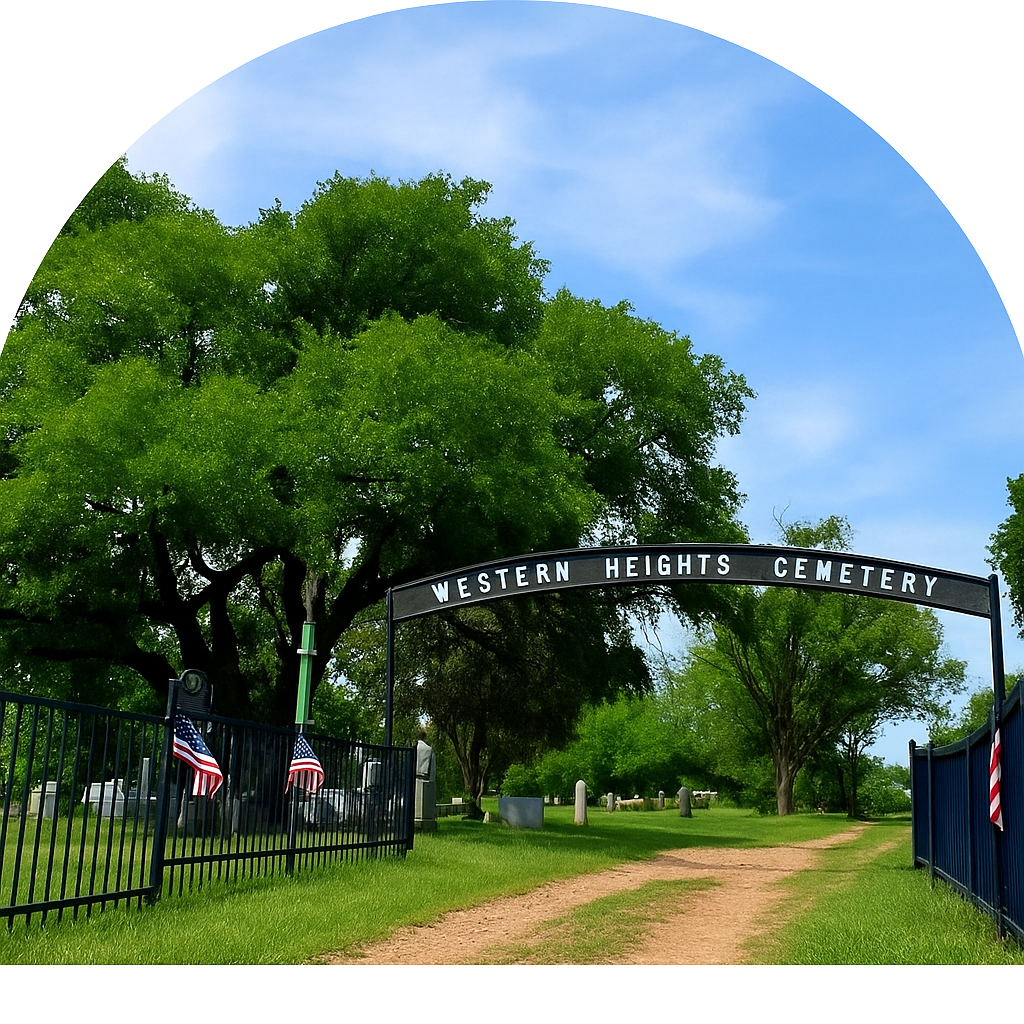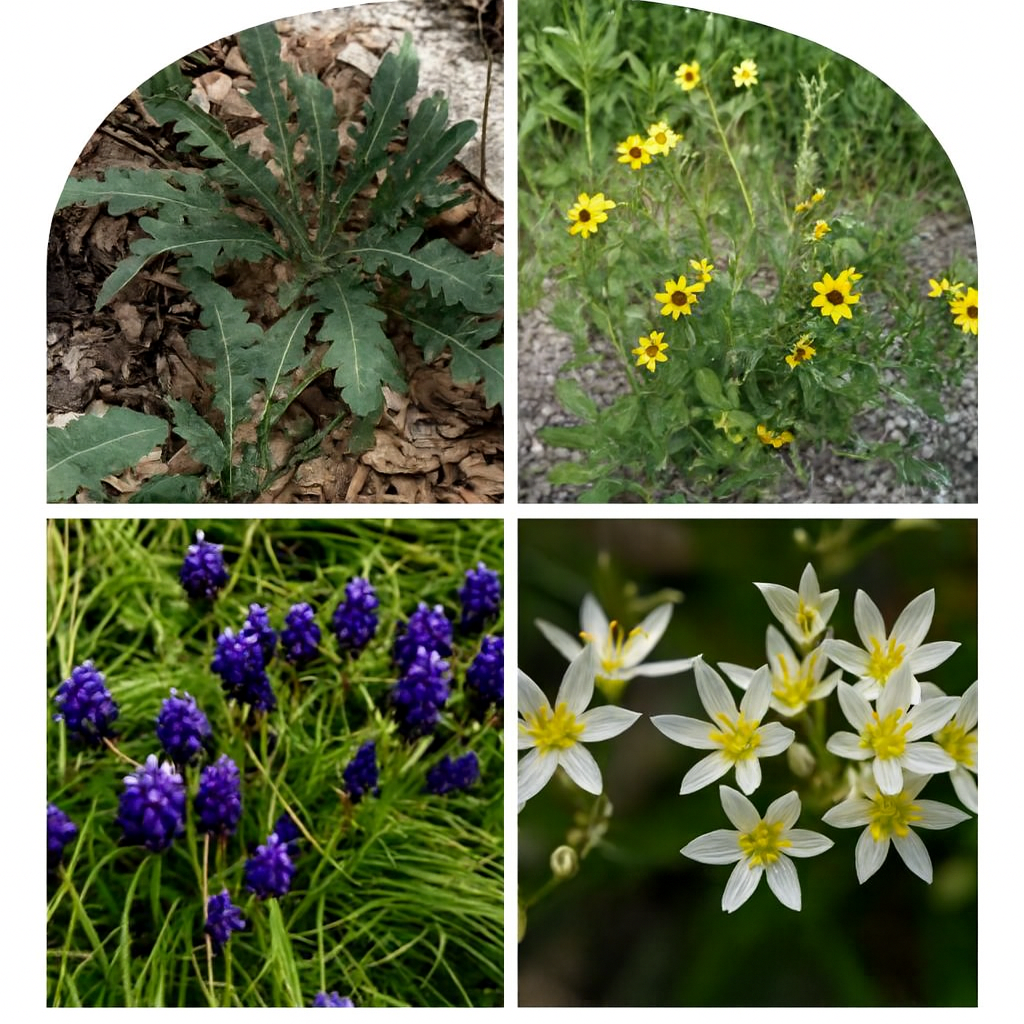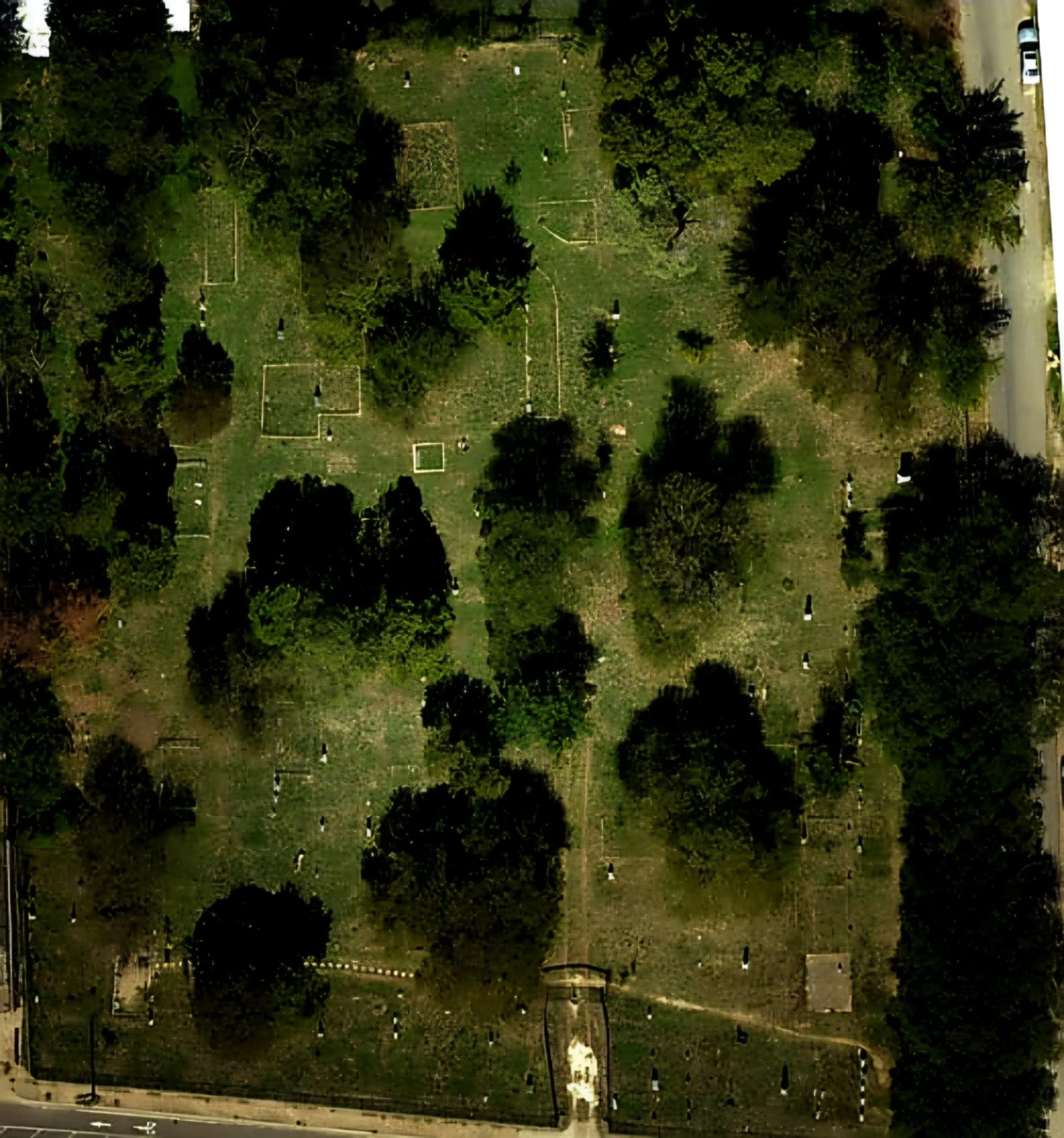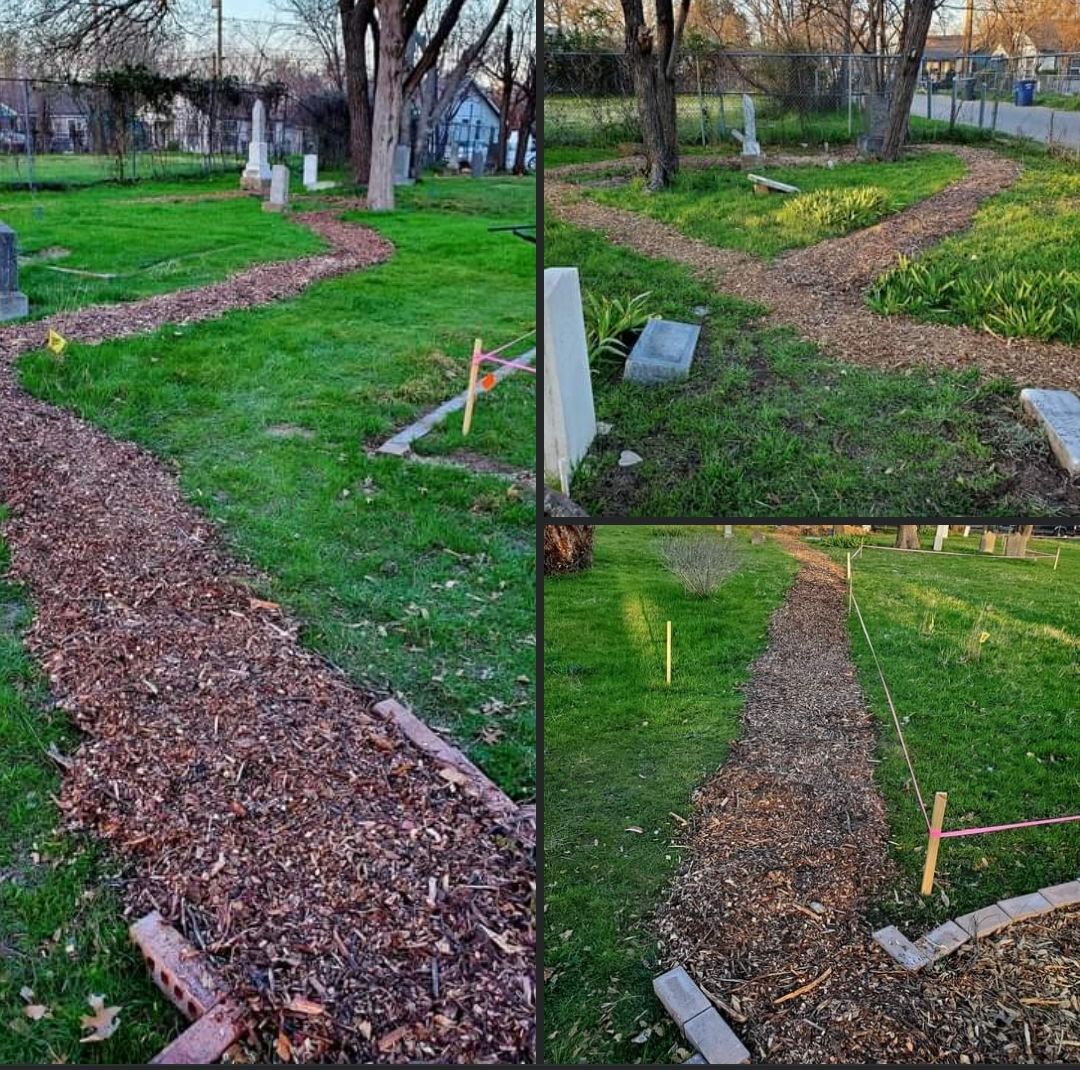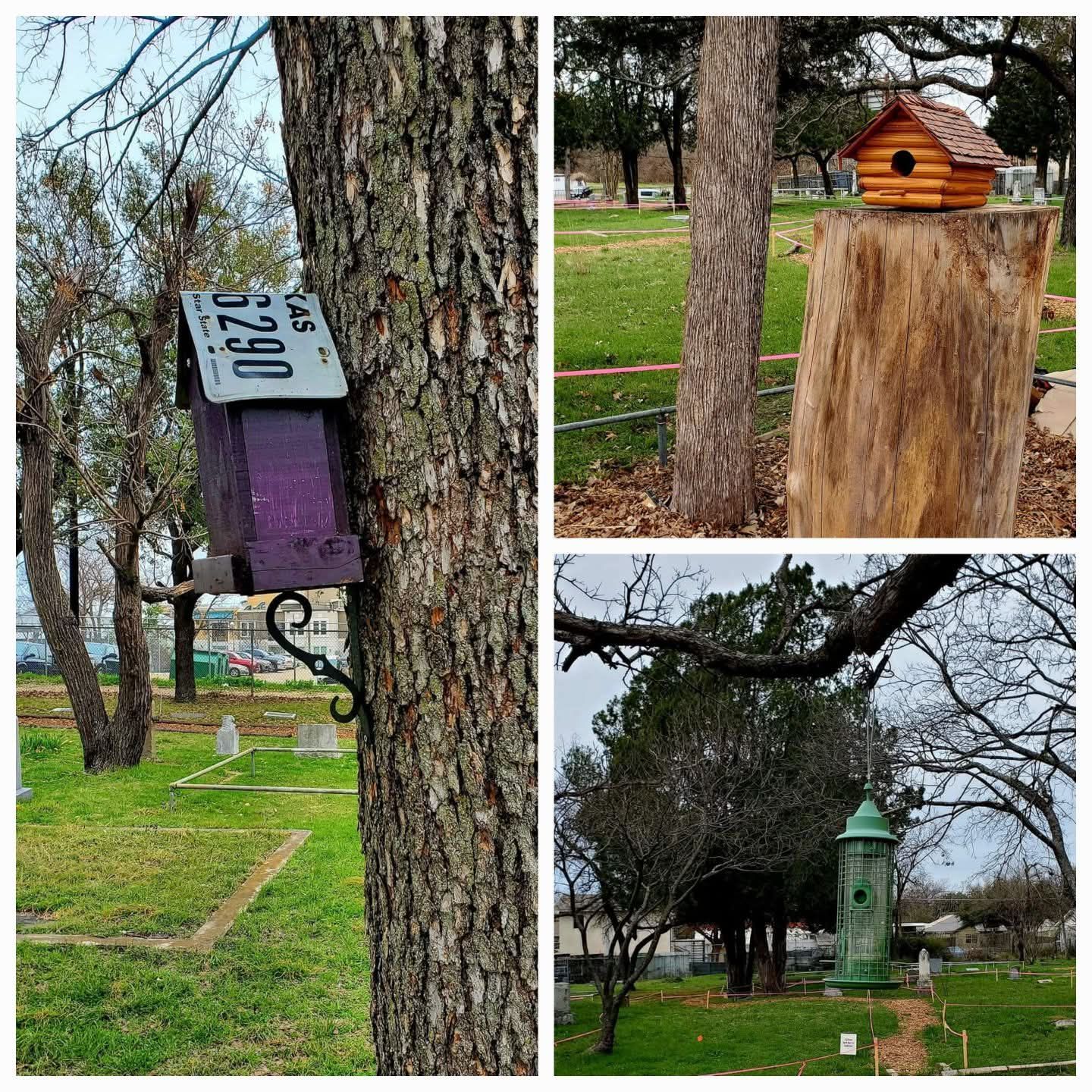Through the Constellation of Living Memorials,
a $5,000 matching grant was secured in Autumn 2023 from the Texas Historical
Foundation. The grant enabled the planting of native plants to create a habitat
for birds and pollinators, and to help connect migratory pathways.
A condition of the grant was a two-year mowing
hiatus on 50% of the land to let the dormant wildflower seed bank emerge. We discovered colonies of Engelmann daisy,
sedge, wild petunia, pigeonberry, and silvertip bluestem along with smaller
populations of snake herb, baby slippers, prickly poppy, and other species.
Thanks to the Texas Historical Foundation
grant and gifts from local gardeners, the initial planting included these
primary species: switchgrass, side oats grama, little bluestem, inland sea
oats, Maximilian sunflower, frostweed, Gregg's mistflower, Monarda fistulosa,
sand bracted sedge, Webberville sedge, fall aster, juncus, yarrow, pokeberry,
American germander, Copper Canyon daisy, fragrant white fall mistflower, and
spiderwort.
